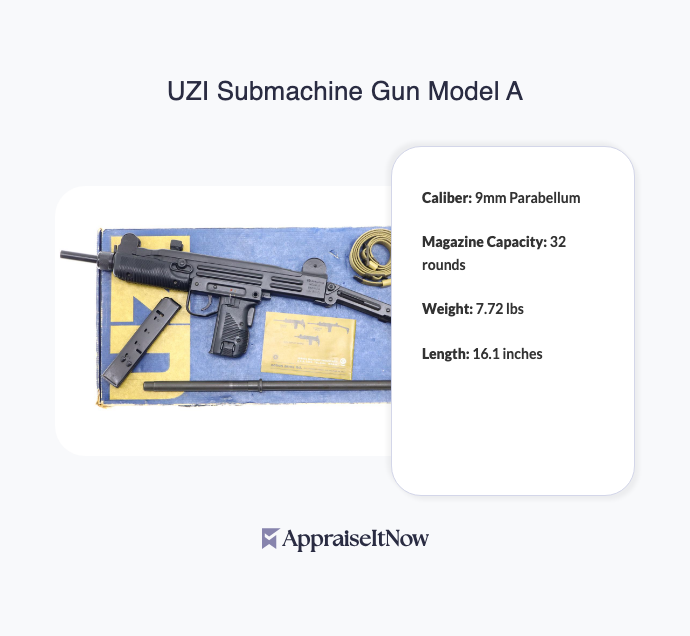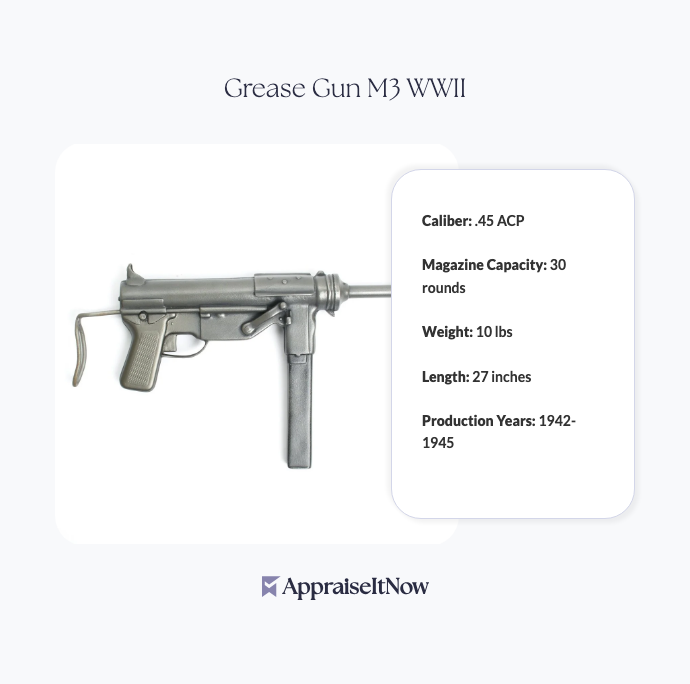<h1>How to Get Your Lee-Enfield No. 4 Mk I Rifle Appraised</h1>
<p>The Lee-Enfield No. 4 Mk I Rifle stands as one of the most legendary firearms in military history, and if you own one, understanding its current market value requires professional expertise. Whether you're considering a sale, seeking insurance coverage, or evaluating an inherited piece, a proper appraisal provides the documentation and confidence you need. These rifles typically command <strong>$500 to $800</strong> in today's collector market, though individual examples can vary significantly based on condition, provenance, and authenticity.</p>
<h2>Understanding Your Lee-Enfield No. 4 Mk I's Historical Significance</h2>
<p>Your Lee-Enfield No. 4 Mk I represents a pivotal moment in British military engineering. Introduced in <strong>1942</strong>, this bolt-action rifle served as the primary infantry weapon for British and Commonwealth forces throughout World War II and beyond. The No. 4 Mk I improved upon earlier Lee-Enfield designs with its robust construction, enhanced ergonomics, and the iconic charger-loaded 10-round magazine system that made it legendary among soldiers and collectors alike.</p>
<div class="callout tip"><p><strong>Historical Note</strong></p>
<p>The Lee-Enfield's reputation for accuracy and reliability made it one of the most respected rifles of its era, commanding respect from military experts worldwide.</p></div>
<p>What makes the Lee-Enfield No. 4 Mk I particularly valuable to collectors is its direct connection to major historical events. Combat-proven in North Africa, Europe, the Far East, and countless other theaters, these rifles carried the weight of history. Beyond military significance, the No. 4 Mk I represents exceptional craftsmanship—the combination of reliable mechanics, precision machining, and durable wood and steel construction that has allowed these weapons to survive decades of use, storage, and occasional neglect.</p>
<h2>Key Features That Impact Appraisal Value</h2>
<p>When an appraiser evaluates your Lee-Enfield No. 4 Mk I, they examine several critical factors that directly influence whether your rifle falls at the lower or upper end of the $500–$800 range.</p>
<p><strong>Condition and originality</strong> form the foundation of any appraisal. A rifle with matching serial numbers across the receiver, bolt, and stock, combined with original wood furniture and metal finishes, commands premium pricing. Conversely, rifles that have been refurbished, refinished, or modified see reduced valuations. The bore condition—how bright and sharp the rifling remains—tells the story of a weapon's firing history and helps appraisers assess overall preservation.</p>
<p><strong>Markings and acceptance stamps</strong> matter considerably. British ordnance stamps, inspection marks, and manufacturer identification provide traceability and historical context. Rifles with clear unit markings or documented service histories typically appraise higher than unmarked examples, as these details create tangible connections to specific military units or campaigns. When you can trace where your rifle served, the narrative behind it becomes part of its value.</p>
<p><strong>Production variations</strong> also affect pricing. Early No. 4 Mk I examples from 1942-1943 differ from later wartime production, and these distinctions matter to discerning collectors. Different manufacturers—including Enfield, Birmingham Small Arms, and Fazakerley—produced these rifles, and certain maker's marks carry slight premium appeal among specialized collectors of <a href="/types/antique-gun">antique guns</a>.</p>
<div class="callout note"><p><strong>Appraisal Insight</strong></p>
<p>Original accessories—cleaning kits, slings, ammunition pouches, or manuals—can add 10-15% to your rifle's appraised value when documented and preserved.</p></div>
<h2>Condition Grading and Valuation Ranges</h2>
<p>Understanding how professional appraisers grade condition helps you anticipate your rifle's likely appraisal value. The Lee-Enfield No. 4 Mk I market recognizes several condition tiers that directly correspond to pricing:</p>
<p>An excellent condition rifle—retaining strong original finish, crisp markings, and mechanically sound operation—positions itself at the top of the $500–$800 range or potentially above it. These examples show light wear consistent with proper storage rather than heavy field use. Very good condition specimens, displaying moderate wear but maintained originality and clear functionality, typically appraise in the mid-range of current valuations.</p>
<p>Good condition rifles, showing honest wear from their military service years but remaining complete and functional, represent the mainstream collector market. Fair condition examples—featuring worn finishes, possibly refinished surfaces, or replaced components—still hold value but appraise lower within the spectrum. Professional appraisers conduct detailed inspections examining the bore, mechanics, wood integrity, and metal preservation to assign accurate condition grades.</p>
<h2>Why Professional Appraisal Matters for Your Lee-Enfield</h2>
<p>Seeking professional appraisal services through credentialed experts—particularly those certified by organizations like the American Society of Appraisers (ASA) or International Society of Appraisers (ISA)—provides several critical benefits beyond mere price estimation. Professional appraisers bring specialized knowledge about <a href="/types/memorabilia-and-collectibles">military memorabilia</a> valuation, allowing them to identify subtle variations that impact worth. They understand current market dynamics, recent comparable sales, and collector demand patterns that influence pricing in ways casual research cannot capture.</p>
<p>When you're considering selling your Lee-Enfield No. 4 Mk I, a certified appraisal establishes a defensible asking price backed by professional documentation. If you're securing insurance coverage for your collection, insurers require detailed appraisals from qualified professionals to issue replacement value policies—your standard homeowner's policy almost certainly undervalues this firearm. For estate planning purposes, heirs need accurate valuations for tax documentation and equitable asset distribution.</p>
<div class="callout tip"><p><strong>Insurance Priority</strong></p>
<p>A USPAP-compliant appraisal from AppraiseItNow ensures your Lee-Enfield No. 4 Mk I receives proper insurance coverage at fair replacement value, protecting your investment against loss, theft, or damage.</p></div>
<p>Professional appraisals also serve legal functions. If you're involved in estate disputes, divorce settlements, or bankruptcy proceedings, the court recognizes certified appraisals from qualified experts far more credibly than informal estimates. This documentation becomes your evidence, supported by professional credentials and detailed methodology.</p>
<h2>Documentation and Provenance: Building Your Appraisal Case</h2>
<p>Your appraisal's strength depends partly on documentation you provide. Compile any records showing your rifle's acquisition history, previous ownership, military unit information, or maintenance records. Photographs taken from multiple angles—showing markings, serial numbers, bore condition, and overall presentation—help appraisers conduct comprehensive evaluations even when physical inspection isn't immediately possible.</p>
<p>The question "When was the Lee Enfield Mk1 made?" connects to appraisal accuracy because production date significantly influences valuation. If your rifle includes maker identification and date stamps, this provides concrete historical positioning. Similarly, understanding the distinction between variants—the No. 4 Mk I versus the earlier No. 1 Mk III or later No. 5 Mk I—affects comparative value analysis. An appraiser specializing in <a href="/blog/what-to-look-for-when-appraising-an-antique-gun">antique firearms</a> can determine these specifications through inspection, but your documentation accelerates the process.</p>
<h2>Regional and Market Factors in Lee-Enfield Appraisals</h2>
<p>Geographic location influences Lee-Enfield No. 4 Mk I values. Regions with active military collecting communities and established gun shows tend to support slightly higher prices due to concentrated demand. Conversely, areas with restrictive firearms regulations may see softer valuations due to reduced local buyer pools. A professional appraiser familiar with your regional market provides valuations reflecting local conditions while also positioning your rifle within national market trends.</p>
<p>The broader collector's market for WWII-era military weapons remains robust, though individual rifle demand fluctuates. Unlike wondering "How much is a WW2 Japanese rifle worth today?" or evaluating other national variations, the Lee-Enfield No. 4 Mk I benefits from consistent international collector interest. Commonwealth nations, particularly UK and Australian collectors, maintain steady demand for authentic examples, creating multiple buyer channels that support valuations.</p>
<h2>Getting Your Appraisal: What to Expect</h2>
<p>When you contact AppraiseItNow for a Lee-Enfield No. 4 Mk I appraisal, the process follows professional standards designed to ensure accuracy and defensibility. Our credentialed appraisers begin with detailed visual inspection, examining every aspect of your rifle—from bore condition to action function to minute marking variations. They photograph your rifle comprehensively, documenting serial numbers, maker marks, and distinguishing features that establish authenticity.</p>
<p>The appraisal includes thorough research into comparable sales, recent auction results, and current market listings. This comparative analysis grounds your rifle's valuation in objective market data rather than speculation. Our experts consider condition factors specific to your example, production variables, and provenance elements that affect value within the broader $500–$800 range or beyond.</p>
<p>You receive a detailed USPAP-compliant report suitable for insurance companies, financial institutions, legal proceedings, or sale transactions. This documentation includes high-resolution photographs, condition assessment, comparative market analysis, and the appraiser's professional certification and credentials. Whether you're buying, selling, insuring, or planning your estate, this certified appraisal provides the authoritative documentation that various parties require and trust.</p>
<div class="callout note"><p><strong>Key Takeaway</strong></p>
<p>A professional appraisal of your Lee-Enfield No. 4 Mk I Rifle provides accurate market valuation, insurance documentation, and legal defensibility for one of history's most respected firearms. Whether you're selling, insuring, or preserving this legendary British weapon, certified appraisal expertise ensures you understand both its historical significance and monetary worth.</p></div>







.avif)







